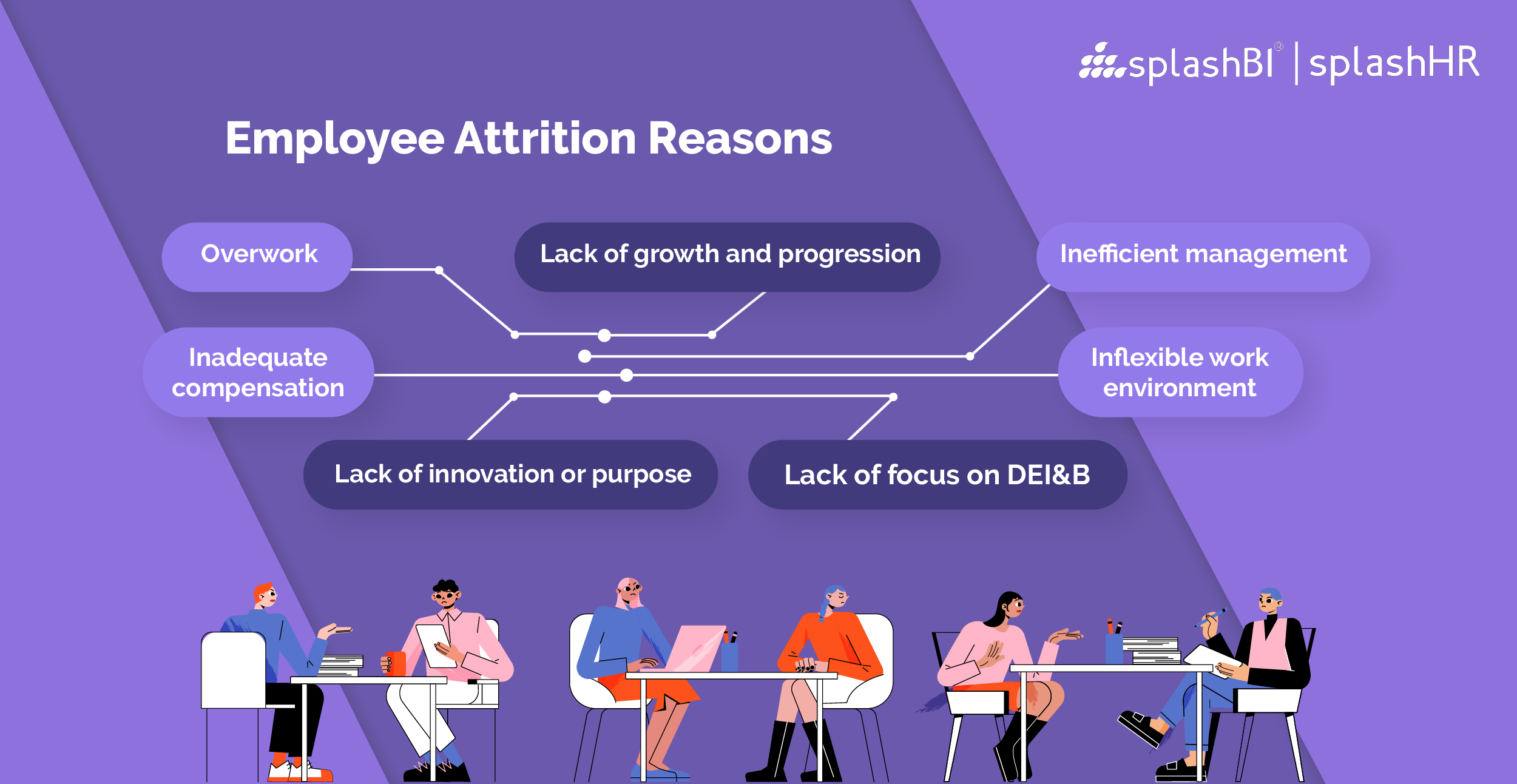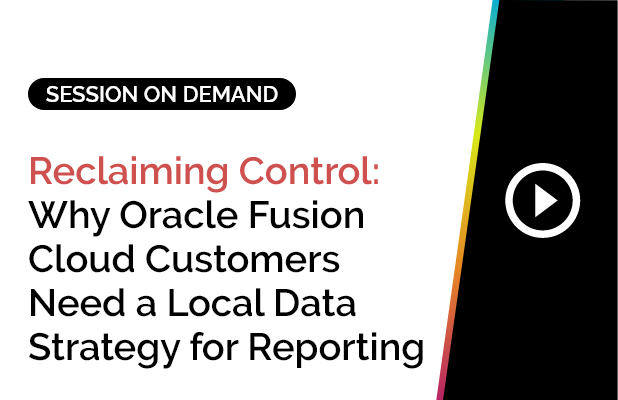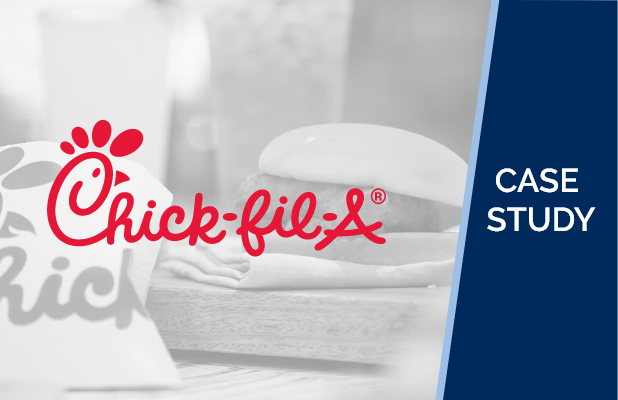US Bureau of Labor Statistics reported that a staggering 4.25 million people quit their jobs in January 2022 alone. A McKinsey global survey found that 40% of people left their jobs without another role to move to. Globally, employee attrition statistics are a significant trend, and now we can add to that the economic uncertainty faced by most countries and industries – increased cost and scarcity of resources. But for businesses and HR leaders to design the right steps to tackle it, they first need to understand the issue at hand.
Let’s start with the basics.
 What is employee attrition?
What is employee attrition?
Employee attrition is defined as employees leaving their organizations for unpredictable or uncontrollable reasons. Many terms make up attrition, the most common being termination, resignation, planned or voluntary retirement, structural changes, long-term illness, layoffs.
Though often used interchangeably, attrition and turnover are not the same.
Attrition Vs. Turnover: What’s the difference?
Attrition is when employees leave the workforce faster than the rate at which their employers hire. Vacancies remain open longer, or the role is eliminated. Sometimes attrition is outside the employer’s control because relevant skills are unavailable in the talent market. Attrition is a long-term concept, focusing more on how many people leave over extended periods. Solving it requires business and HR leaders to use big-picture, strategic thinking and interventions.
Turnover, in contrast, is a short-term issue. Organizations can generally solve it by quickly and actively hiring new people as temporary fixes to fill resource or skill gaps. Also, turnover considers all terminations, even refilled positions, while employee attrition includes all long-term vacancies and eliminated jobs.
Global employee attrition statistics and what they say about the state of the talent market
- January 2022 saw 4.25 million people quit their jobs, up from 3.3 million in 2021: US Bureau of Labor Statistics.
- July 2022 saw 5.9 million total work separations in the US: US Bureau of Labor Statistics.
- Nearly half of the people leaving their current jobs are moving to entirely new industries: McKinsey.
- Annual voluntary turnover is likely to jump 20% in 2022: Gartner
- 57% of surveyed employees report that they are open to new job opportunities within the next year: Future Forum
Labor shortage ranks amongst the top 3 CEO concerns worldwide. 2021 is now commonly referred to in corporate circles as the year of “The Great Resignation.” It saw many employees leaving their jobs or looking for other opportunities to improve work-life balance, better work practices, and a better sense of health and well-being.
As 2021 ended, business leaders expected business-as-usual in 2022, especially with movement restrictions being lifted. They hoped employees would cope with the new normal as they returned to offices. But this hasn’t been without its fair share of challenges concerning the future of work.
Companies are faced with substantial administrative transformation. As a result, HR leaders and teams have had a lot on their plates, with new demands like hybrid work, improved policies, and better compensation and benefits. Managing attrition in these times of flux is critical.
Employee Attrition: An Expensive Problem
Knowing an organization’s attrition rate helps understand how employee-friendly the organization is and what it can do better. A high attrition rate could mean insufficient compensation and benefits, a dated, high-pressure work culture, or inadequate learning and professional development opportunities.
No matter what the reason, employee attrition is an expensive business problem and filling vacant positions costs significant time and money. Effective recruitment includes hiring, onboarding, and training – all of which translate to increased time cost and financial investment. Replacing a full-time employee can cost anywhere between half to twice the employee’s annual salary, says a Gallup study.
Add to these hidden costs like the time spent on adjusting to new work culture, building meaningful connections at work, and getting familiar with processes as new employees get up to speed. It is worth remembering, when employees depart, they take away more than just their skills. They leave behind gaps in client relationships, unique perspectives and experiences, and personal and professional networks.
Therefore, it makes sense for organizations to calculate the employee attrition rate and look for ways to save costs, time, and effort.

How to Calculate Employee Attrition?
So, what is the attrition rate, and how is it calculated? An organization’s attrition rate is the rate at which employees leave an organization. The formula is explained below:
X: Number of employees who were separated from the organization for any reason
Y: Average number of employees
Attrition rate = (X/Y) x 100
Types of Employee Attrition
Employee attrition has many reasons, both voluntary and involuntary. But most of these separations fall into one of the following four categories.
1. Voluntary Attrition
It is when the employee resigns for a better opportunity or because they cannot cope with the work pressure or other reasons.
2. Involuntary Attrition
It is when the organization decides to part ways with the employee. Typical reasons for involuntary attrition include layoffs, policy violations, and mergers and acquisitions, among others.
3. Retirement
Every country has regulations around the maximum age till when organizations can formally employ a person. Therefore, every year, some employees may retire from organizations. For sectors with a more senior and seasoned workforce, retirement is often the reason for an uptick in attrition rate.
4. Demographic Reasons
Even as employers try to build equal-opportunity workplaces, all employees may not agree or find these efforts sufficient. Demographics like religion, caste, or gender can affect employee attrition.
Why your Best Talent leaves: Employee Attrition Reasons
You can’t control attrition if you don’t know what is driving your employees out of the door.
Some of the most critical employee attrition reasons include:
1. Lack of growth and progression
Lack of growth and progression: According to a report from Gallup, 87% of the surveyed millennial workforce report opportunities for growth and development as the most crucial factors for career satisfaction. About 70% of professionals in other generations echoed this sentiment. Not being able to commit to a structured career progression plan can leave your employees unhappy, driving them to organizations that do offer these opportunities. To learn more about engaging and retaining millennials, check out how to engage millennials in the workplace.
2. Inefficient management
The well-known saying in HR circles, “employees don’t leave companies, they leave managers,” has never been truer than now. According to an employee retention report from TINYpulse, employees who rate supervisor performance as subpar are four times more likely to look for a new job.
3. Inadequate compensation
Inadequate compensation is one of the leading causes of employee dissatisfaction. As this Forbes article notes, the average employee can expect a 3% annual increase by staying in the same company, as opposed to a 10 to 20% compensation boost when they switch. Explore Strategies to Close the Gender Pay Gap.
4. Lack of innovation or purpose
Many individuals want to contribute to society, solve complex problems, and affect change. This is especially true for the younger workforce. Millennials are 4x more likely to walk out the door if pay and purpose don’t align, and the meaning deficit is more substantial for the GenZ workforce.
Employees can switch off when companies fail to innovate and evolve or contribute to the community in meaningful ways. As a result, your top talent may leave for the chance to engineer a new product, start a new function, or build something that addresses real-world issues.
5. Lack of focus on DEI&B
Diversity and inclusion are essential factors in the office environment. All employees want to feel safe, accepted and empowered to do their best. Discrimination puts significant stress on employees and can contribute to burnout and exits.
6. Overwork
It is a significant reason why employees quit. A recent Deloitte survey uncovered that 77% of respondents experienced burnout at their current job, and 42% had left a position for this reason. Younger generations are increasingly demanding a better work-life balance.
7. Inflexible work environment
According to a recent survey from Flexjobs, 82% of respondents claimed they would feel more comfortable staying with an employer who offered flexible working arrangements.
Some other common reasons for leaving are job mismatch, toxic workplaces, declining confidence in the company’s market value, and personal reasons.
Employee Retention Strategies: Best practices to address high attrition rates
If you sense your business is at risk of losing talent, you must move fast to shore up your employee retention strategies. Candidates with in-demand skills often don’t have to wait long to find new opportunities.
Employee retention need not be complex if you identify your people issues and address them promptly.
Some employee retention best practices include:
- Coaching managers to be strong mentors and guides for their teams.
- Industry-standard compensation and additional benefits to make employees feel valued and develop a sense of belonging.
- A continuous feedback loop but, more importantly, acting on employee feedback to reinvent policies and regulations.
- Hiring right with business needs, skill requirements, and cultural alignment.
- Focusing on well-being and mental health: This aspect has become crucial for employee satisfaction since the pandemic. Provide support to employees during personal emergencies and give them the flexibility to focus on their mental health.
- Building diversity and inclusion into your organizational DNA: A diverse workforce and inclusive culture drive business growth, reduce turnover, and foster innovation and creativity.
- Robust on-boarding programs: Research by the Brandon Hall Group shows that organizations with a positive onboarding experience increase new hire retention by 82%.
Using People Analytics Strategy to boost Talent Management Strategies
Everywhere, organizations are struggling to retain existing employees and recruit new ones. IDC conducted an employee experience survey in Europe to understand the gaps between employers and employees. The results have clear implications for human capital management (HCM) and people analytics strategy and related technologies. The HR technology stack will play a vital role in employee experience, reducing attrition and boosting retention rates. At the core of this stack is workforce analytics for actionable insights on your workforce needs, experience, and expectations.
The last two years have led to greater dependence on such insights within the talent management lifecycle. For example, what does people data say about the effect of returning to the office on attrition and retention? Will a hybrid model work, or is it better to continue remotely? Which one will impact business outcomes positively? How can voluntary resignations be prevented?
The answer to these questions sits in the data that organizations already own.
How people analytics can improve your employee attrition rates
People analytics solutions can make the most of the data and insights by first defining the parameters of attrition and retention –
- who is leaving
- why and when are they leaving
Your raw data is often siloed into pockets of information across multiple HR tools. People analytics solutions will blend, visualize, and analyze ALL your workforce data in easy-to-use dashboards and reports, meaning HR leaders and organizations are able break the silos and find meaning in their data sets. Eventually, these insights help them take positive action in employee attraction, engagement, productivity, retention, and attrition.
SplashBI for HR, contemporary HR leaders’ preferred people analytics tool
SplashBI for HR, is a people analytics platform from SplashBI, designed to help leaders monitor organizational health regarding employee satisfaction, attraction, retention, and attrition. It helps HR teams analyze and measure vital human capital data across the board – headcount and turnover, absenteeism, employee performance, compensation and performance, employee replacement cost, diversity and inclusion, recruitment, and many more.
Get insights into:
- Talent attraction, recruitment, onboarding
- Learning and development
- HR compliance
- DEI&B implementation
- Payroll and benefits
- Timing and attendance
- Recognition and performance
- Mental health and well-being
- Employee engagement and experience
- Workforce utilization
- Skill gaps and more.
These insights can go a long way in predicting attrition, discovering what works for talent attraction and retention, and often even paving the way for happier employees and healthier revenues. SplashBI for HR will help you get the evidence to start taking action and make improved decisions to drive better business outcomes.
Take advantage of SplashBI for HR’s out-of-the-box people analytics platform that can be extended and configured to suit any business requirement. It will enable real-time access to data and insights, whether your data is in the cloud, on-premise, or hybrid – we help you make sense of your data to ensure you are always up to date.
We can automate time consuming processes that will help you scale your Talent Analytics. We are interoperable with your existing IT stack meaning change management and adoption is improved. We can meet the most stringent Security demands to ensure data integrity across the whole platform. And all the time we ensure you are better informed to make better decisions.
Hire better. Retain and engage more: all the outcomes, one solution – SplashBI for HR People Analytics.
Before we go
Employee engagement and retention are intrinsically linked. With the candidate market as tight as it is now, use people analytics to rise above the noise. Combine empathy, data, and technology for improved workforce outcomes.














